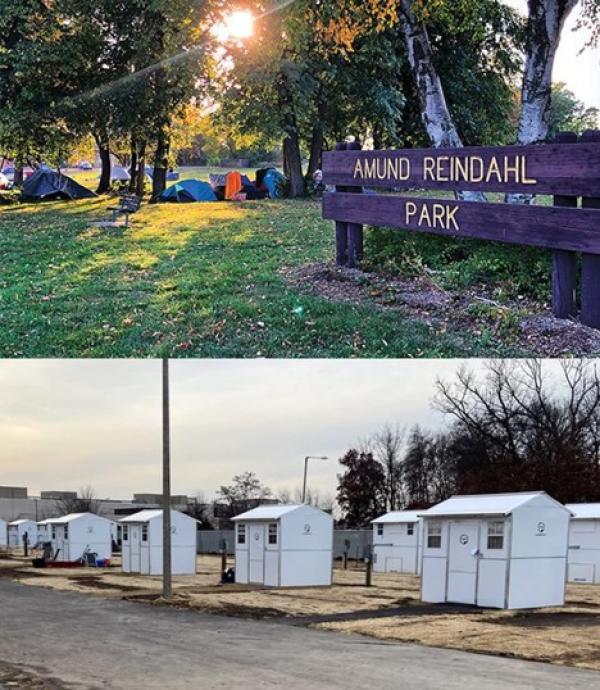ARPA Housing Funds: Case Studies of Innovative Use
Penny Crispin, Grant Ewing, Jasmin Higo, Ishaan Keskar, Alexis Marquez, Jordan Perras, Julia Selby, Swathi Suvarna
The COVID-19 pandemic exacerbated the homelessness and affordability crisis in the United States, as social distancing measures caused homeless shelters to deny entry, limit capacity, or close altogether. With home prices high and rental vacancies low, many Americans have been squeezed out of affordable housing options. The American Rescue Plan (ARPA), signed into law in March of 2021, provides funds to localities to address affordable housing, rental assistance, homelessness, and eviction prevention. Within the homelessness subgroup, two innovative approaches include the construction of tiny homes and conversion of hotels. These projects expand housing supply and offer either a short-term solution to transitioning unhoused populations out of homelessness, or a long-term solution offering permanent supportive housing. Four case studies reveal promising opportunities for success including affordability, collaboration and partnerships, and the leveraging of ARPA funds to maximize impact. The case studies also reveal challenges, including restrictive federal regulations of how funds are used and the issues of location and community buy-in of new projects for homeless populations.
Crispin, P., Ewing, G., Higo, J., Keskar, I., Marquez, A., Perras, J., Selby, J. & Suvarna, S. (2022). ARPA Housing Funds: Case Studies of Innovative Use Department of City and Regional Planning, Cornell University. ( Full Report | Issue Brief | Slides )



